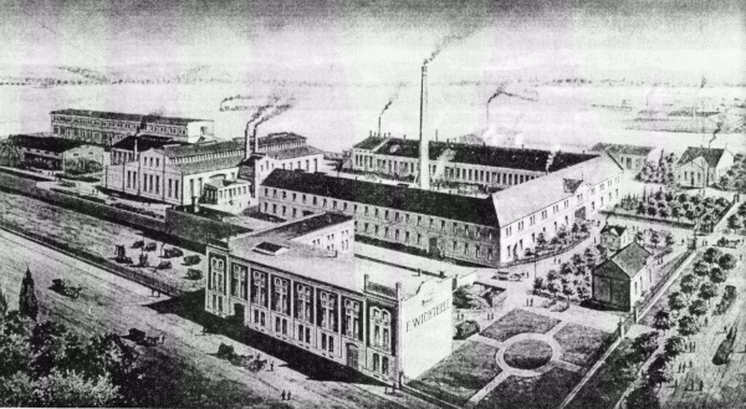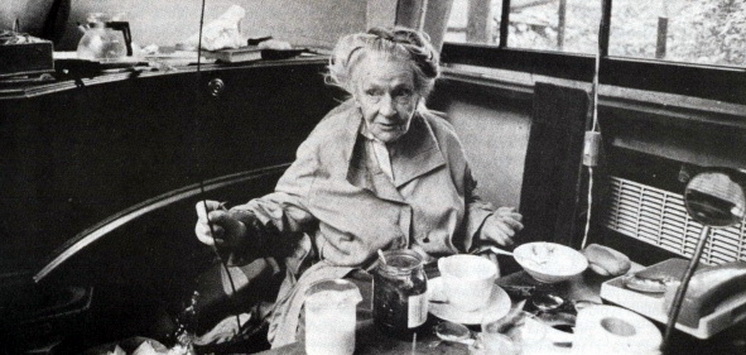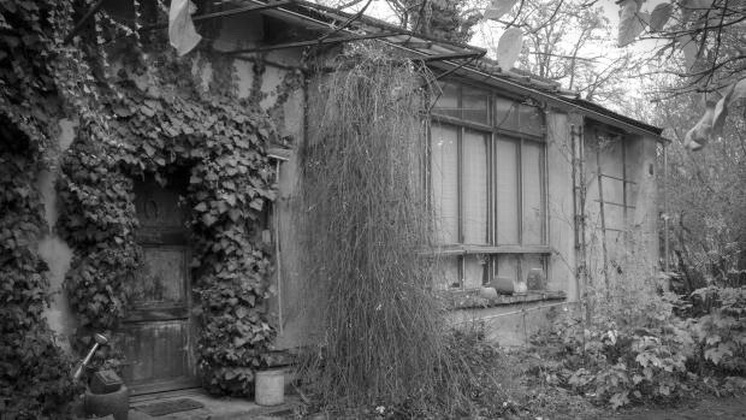Hana Wichterlová – The first lady of Czech sculpture art

Hana Wichterlová, born March 2, 1903 and her ten-year younger brother Otto Wichterle, the inventor of contact lenses, came from a rich Prostějov industrialists’ family – Wichterle and Kovařík (Wikov) engineering works company.

Factory
Father Karel Wichterle belonged to enlightened entrepreneurs who was aware that money is important but it does not mean everything. He was interested in art and culture apart from his business ruthlessness and desire for material success. A hobby which does not bear any penny but it enlightens the heart. He befriended many artists such as architect Jan Kotěra. It was him who noticed that Hana had a talent for fine arts so he recommended that she be sent to an art school.
Her studies and works of art
Sixteen-year-old Hana was attending the Academy of Fine Arts in Prague where she studied the art of sculpture by Jan Štursa between 1919 and 1925.

Her classmates were Vincenc Makovský, Josef Wágner or Bedřich Stefan, her future husband. She graduated with a sculpture called ”Údiv” (i.e. Astonishment) which is considered to be one of her masterpieces.

After graduation she left for Paris where she lived and create artworks for several years which helped her to mature artistically. She encountered there with the works of Romanian sculptor Constantin Brâncuşi whose pieces of art influenced her very much later.
Among her other well-known artworks belong ”Stojící dívka” (Standing girl), ”Torzo s vázou”(Torso with a Vase), and ”Pupen” (Bud) which represents internal shape of flower-bud. This artwork is considered to be the most prominent sculpture of inter-war avant-garde. Since 1931 she was a member of the Mánes Association of Fine Artists.

Smržice and Prague studio
During World War II she lived at a farm in Smržice and she did not create any artwork. In 1942 she married a former classmate and sculptor Bedřich Stefan. In 1948 she came back to Prague, but as for her artwork she started to create artworks in the mid-1950s.

In the Malá Strana studio Hana Wichterlová lived and worked for over 50 years. She created there many excellent artworks. She was often visited by a photographer Josef Sudek who created the cycle of magical photographs called “Zahrádka paní sochařky” (i.e. A Sculptress’s Garden).
Unfinished Mahulena
Particular place of her artworks occupies the unifinished sculpture Mahulena which she worked on for 35 years. This composition representing symbiosis of a tree and woman body became the symbol of International Sculpture Symposium of Hana Wichterlová which lasted for 10 years in Prostějov. She applied to custom-made jobs, too. Animal reliefs which have served as house signs on block of flats on Vítězná street in Kladno.

An artist of outstanding merit
In 1968 she was awarded the title of an artist of outstanding merit. In 1988 she should have had an exhibition at Prague’s Nová síň when celebrating her 85th birthday. She gave in this opportunity in favour of young sculptors – The exhibition of Young artists to the anniversary of Hana Wichterlové has become an exceptional cultural event.

Hana Wichterlová belong to the most prominent figures of Czech inter-war avant-garde sculpture art and she has all right to bear a nickname ”the first lady of Czech sculpture art”. She died when working in her studio at the end of August in 1990. She belongs among well-known representatives of modern Czech sculpture art.


Source: www.lomyatezba.cz
